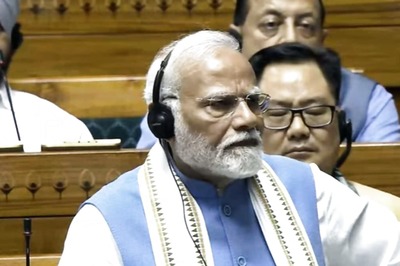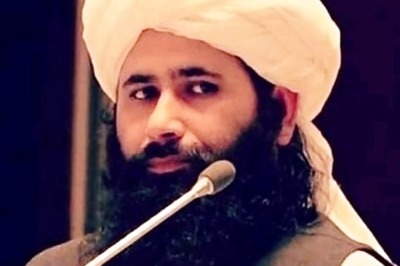
views
Ajay Maken has resigned, for the second time in the past six months, as the president of Delhi Congress. Former chief minister Sheila Dikshit is back in Delhi from France, having convalesced from a heart ailment. In the past few weeks, she has expressed the view that she wasn’t averse to leading the party once again in the national capital. This should be the ideal situation for passing the baton back to Dikshit.
However, there are forces within the Congress party who may not be very keen on having Dikshit back, lest she become an impediment in their ‘pan-India’ plans of alliance with the regional forces. The appointment of the next president of Delhi Congress is umbilically connected to the party’s strategy for the Lok Sabha polls in the summer of 2019. The next president of Delhi Congress would have to bear the burden of leading or rejecting an alliance with the Aam Aadmi Party (AAP).
Contrary to the general perception, Dikshit may not be very vocal about her reservations on having an agreement with the Arvind Kejriwal-led party but she is very focused on regaining “halcyon days” of the Congress in the national capital, which can be easily interpreted as restoring her own lost legacy.
Kejriwal’s rise in national politics has largely been at the cost of the Congress in the national capital and to some extent in Punjab. Till Kejriwal arrived on the scene, Congress had won three assembly elections (1998, 2003 and 2008) under the stewardship of Sheila Dikshit, who held the office of the chief minister for three terms. Despite pursuing development-oriented politics, Dikshit could not withstand the political tsunami created by charges of corruption brought mostly against central Congress leaders, and faced a humiliating defeat in 2013.
In the 2014 Lok Sabha polls, the Kejriwal effect travelled to neighbouring Punjab, where his party won four seats and cut into the votes of the Congress to bail out Akali-BJP candidates on several other. Though Captain Amarinder Singh managed to win his battle royale with present finance minister Arun Jaitley at Amritsar, his wife Praneet Kaur lost on their home turf of Patiala to the AAP candidate. A minister in the Manmohan Singh government, Kaur had won the Patiala seat in 1999, 2004 and 2009 before losing to cardiologist Dharamvir Gandhi in 2014.
Five years later, there is a changed scenario. While Dikshit is itching for a battle once again to regain her lost stature, Amarinder Singh wants his former ‘riyasat’ (fiefdom) back under his wings and Kejriwal, with his fast falling stock in the political market and equally fast deserting flock, wants to stitch up an alliance to survive 2019 to fight the assembly polls in Delhi in 2020.
Kejriwal wants a tie-up with the Congress, not just in Delhi but also Punjab and Haryana. The exit of activist-lawyer and former Leader of Opposition in Punjab Assembly HS Phoolka from the party, and the fiasco earlier over bringing a resolution on the 1984 anti-Sikh riots in Delhi assembly, are a clear indicator that the AAP wants to hinge on the UPA bandwagon at any cost.
While there may be some takers for Kejriwal’s offer in the Congress’s central leadership, its alliance with the AAP is being resisted by the local leaders in all the three states. The state leaders have especially been emboldened by the party’s no-alliance stance in the three states of Rajasthan, Madhya Pradesh and Chhattisgarh, where it won in the recent assembly polls and the rout of the alliance with Telugu Desam Party in Telangana.
In Haryana, with Om Prakash Chautala’s family outfit Indian National Lok Dal in doldrums and the state BJP government facing anti-incumbency, the Congress leadership sees no reason to share the turf with AAP, which is yet to prove its presence in the state. In Punjab, the Amarinder Singh-led Punjab Congress warded off AAP’s assault to come to power on its own and has only grown stronger from thereon, whereas AAP’s local leadership has withered faster than expected.
In Delhi too, contrary to the general perception, the Congress under Ajay Maken managed to regain considerable turf after the total rout of 2015. In the municipal polls of 2017 and the assembly bypolls, the Congress consistently showed improved performance. Moreover, in Delhi, going with the AAP would mean that Congress would lose the trump card of its ability to provide efficient administration in the national Capital.
AAP’s resounding victory in 2015 assembly polls in Delhi was largely attributable to the strategic voting by Muslim, Sikh and Dalit voters. The vote share difference between the Congress and AAP was to the tune of more than 40 per cent. Two years later, in the 2017 municipal polls, it had been reduced to around five per cent and in the assembly bypolls which followed, Congress gained the upper hand.
Today, AAP’s perceptible strength hinges on Muslim voters, who may opt for a party that stops BJP from getting a second term in office at the center. Following the round of the assembly polls in November 2018, the Congress under Rahul Gandhi has positioned itself for the challenger’s role. In case of a non-alliance, the Muslims would prefer strengthening the challenger rather than vote for a spoilsport.
(The writer is a senior journalist and political columnist)




















Comments
0 comment